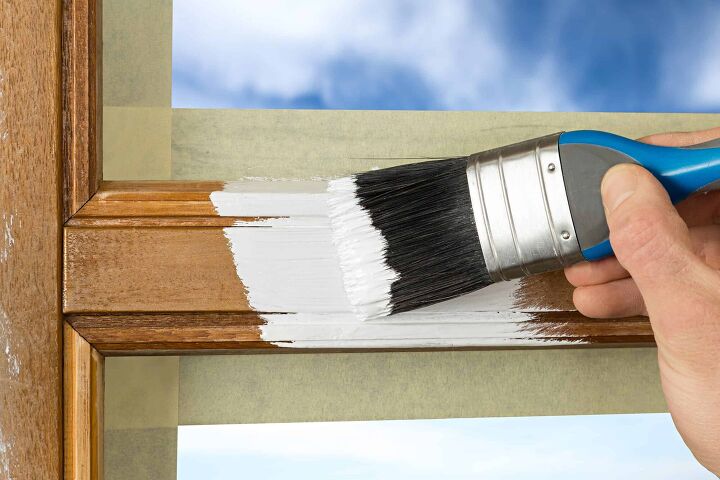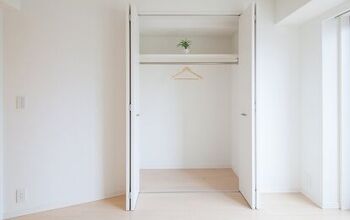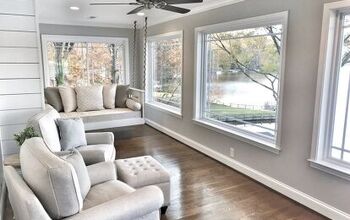Should I Paint My Wood Trim White? (Find Out Now!)

As home detailing traditions go, you can find wood trim along the wall of most living spaces. In terms of design, the trim in your home may be simple or sophisticated, stained, or varied in color. No matter the specific look, it frames and speaks volumes about the structure of every room in your home.
Yes, you should paint your wood trim white if you want to make the room much larger and more modern. It’s a great way to enhance the natural light as well. However, if your walls are white, you may want to paint them a different color first, as white on white can be overwhelming.
But before dusting off your paintbrush, there are a few other circumstances to consider. These include the light in your space and your home’s overall style and age. Also important are the trim and baseboards throughout your entire house and the quality of your wood.
Do You Need to Hire a Paint Contractor?
Get free, zero-commitment quotes from pro contractors near you.

The Pros and Cons of Painting Your Wood Trim White
Like everything in life, painting your wood trim has its ups and downs. In many cases, it comes down to your personal sense of style and design preferences. Still, before you make your final choice, it’s always good to know the pros and cons.
The Pros
White Trim Makes Your Room Look Larger
Under most circumstances, adding a touch of white to a space makes it seem bigger. This effect is due to the broadening illusion that white gives the human eye.
Have you heard that white clothing can make a person look bigger, while black is slimming? This is the same concept. We’re just applying it to your house.
For this reason, white trim can do wonders for a room, particularly if it’s on the smaller side. It can give off the illusion of extra space, rather than making a person feel boxed in. The extra touch of white will provide a bigger, more comforting impression on the occupant.
Modern Love
These days, modernity is a much-prized quality in a home. And white trim gives off the feeling of modernity. It has a fresh quality, which carries over to your guests’ impression of a room.
For this reason, white trim can be particularly useful in an older house. Retaining significant portions of stained woodwork in an older home while painting trim white creates a rare and attractive variation. Doing so may provide a style that contemporary homes can’t recreate.
That Deceptively Fresh Feeling: White Trim Feels Cleaner
Since we associate white with cleanliness and purity, white trim indicates a sense of hygiene. Ever wonder why every doctor’s office you’ve gone to is so white? Now you know!
Sure, you probably don’t want to make your house so sterile looking that your guests feel like they’ve entered a clinic. But painting your trim white evokes a feeling of cleanliness.
And let’s face it, we always want our house to seem clean, even when it isn’t. (Especially when you have small children bent on mucking up its every surface.)
Reflective Surfaces Brighten Your Room
To paraphrase Mulan, ‘When will my white trim’s reflection show who I am inside?’ White reflects the color spectrum in our eyes. Because of this, you can use it to enhance the colors within your room.
When trying to enhance a colored wall, white trim guarantees a positive addition to your living space’s overall feel. Let’s use gray as an example. Left alone, gray indicates a drab quality, potentially giving your guest a negative sensation.
Adding white trim to a gray room, however, creates a positive juxtaposition. The contrast deepens the gray and heightens the contrast between the two colors. And that’s just bouncing white trim against a gray wall. The sensation of contrasting white trim with stronger colors can further please the eye.
But white trim doesn’t just enliven colored walls. It also goes well with most wall designs and lighter wallpaper.
Cleaning White Trim Is Easy
Despite opinions to the contrary, it’s not all that hard to clean white trim. And, depending on how scuffed your trim gets, there are some quick fixes available. Swiffers, wet cleaning wipes, or Mr. Clean Magic Erasers usually take care of any light blemishes.
But even if your trim requires a thorough clean, a dry wipe followed by a warm, soapy washcloth works great. Plus, trim is typically painted with a satin, semi-gloss, or even high-gloss paint finish. Usually, these shinier finishes are easy to clean in a pinch.
White Trim Promotes Calm
White gives off a calming sensation. Because wood trim provides a visual foundation for your room, painting it white creates a balanced and more tranquil aesthetic.
For this reason, family meeting rooms, libraries, home offices, and studies benefit greatly from white trim. They say you can’t pick your family, but your newly painted white trim can help them chill out a little.
The Cons
Your Walls Are Already White
Remember how clinics use white walls to indicate sterility? Placing a white-on-white color scheme in your home can create a look that feels inorganic. Unless you want your house to look as sanitized as a doctor’s office, white trim isn’t your best bet.
Your Space Has Lots of Natural Light
The color of your walls might not be the only scenario to make you hit the pause button on painting the trim white. Bright natural light in a room is an essential factor, too.
Take lightly stained, natural wood, for instance. When naturally lit, it emits a warm, comforting quality. If yours is such a space, steering clear of white trim may be worth your while.
Natural light mixed with white walls, however, has a tendency to create a blown-out feeling. So many reflective surfaces can become harsh and unwelcoming. Simply put, you can have too much of a good thing.
Consider the Age of Your Home
Older homes, especially those from the early twentieth century and further back, typically showcase craftsmanship not found in newer models. This craftsmanship often features natural wood.
If your home fits this bill, the original wood design alone may help retain the charm and sensibility of your house. And it’s possible that adding white trim won’t enhance such an aesthetic.
You’re Trying to Sell Your House
If selling your house is on the menu, you may want to consider your wood trim’s current quality before making alterations. Oak, for instance, is highly rated. Due to its fine coloring and stability, homeowners often leave oak trim alone.
In the case of selling older homes, original woodwork is a valuable commodity. It’s not impossible to remove paint or stain from natural wood surfaces, but it does require a lot of work. For this reason, leaving your wood trim natural is the best bet, so future buyers can make their own choice.
Do You Need to Hire a Paint Contractor?
Get free, zero-commitment quotes from pro contractors near you.

Related Questions
Should I paint my wood trim white if my trim is already stained?
Just because your trim is already stained doesn’t mean you can’t paint it. It just means that you’ll need to do a few extra steps before you can start painting. Any wood can be sanded and prepped to remove stain. Make sure to take your time to prep your trim properly. This leaves a blank canvas for you to paint the wood any color you like, including white. Don’t fret, though, the great thing about wood is that although time-consuming, you can sand paint off if necessary.
What if I want to paint my wood trim, but I like my white walls?
If you’re married to the idea of white walls, you may find that painting the trim a darker color really shakes up your room. Coupling wood trim painted black with white walls makes a look that’s very sleek and modern.
Are there any kinds of old homes that look good with white trim?
There are always exceptions to the “retain an old house’s original look” rule. Victorian homes, for example, are prime candidates for livelier colors. And more vibrant colors look great against white trim.Basically, although there are some basic rules to consider, painting your wood trim white is a matter of personal style. It’s all about what makes your house feel like a home.

Stacy Randall is a wife, mother, and freelance writer from NOLA that has always had a love for DIY projects, home organization, and making spaces beautiful. Together with her husband, she has been spending the last several years lovingly renovating her grandparent's former home, making it their own and learning a lot about life along the way.
More by Stacy Randall





















![10 Most Dangerous Neighborhoods in Baltimore [Updated]](https://cdn-fastly.upgradedhome.com/media/2023/07/31/9075655/10-most-dangerous-neighborhoods-in-baltimore-updated.jpg?size=350x220)





